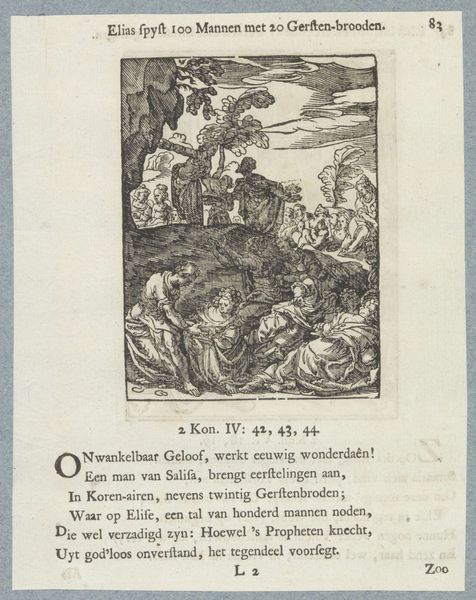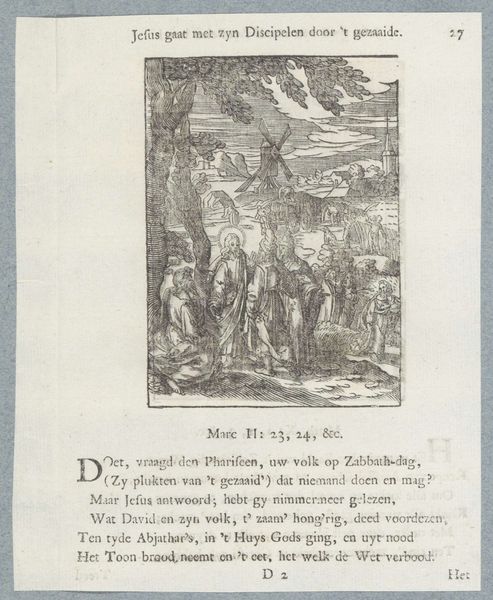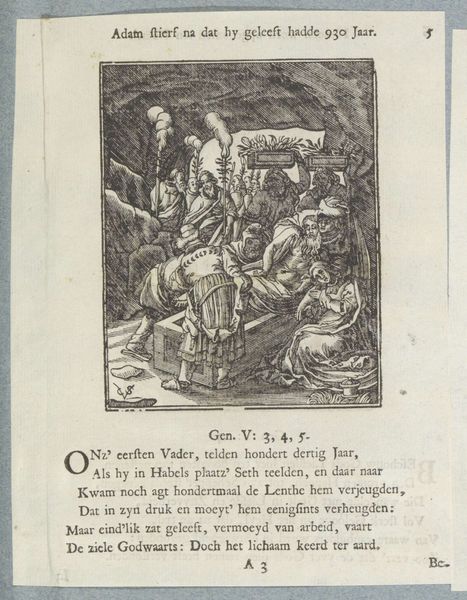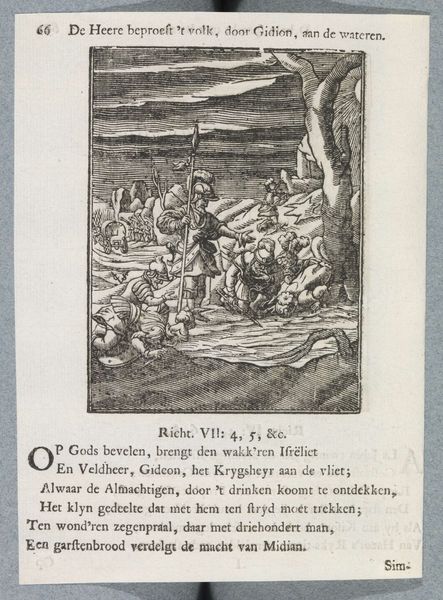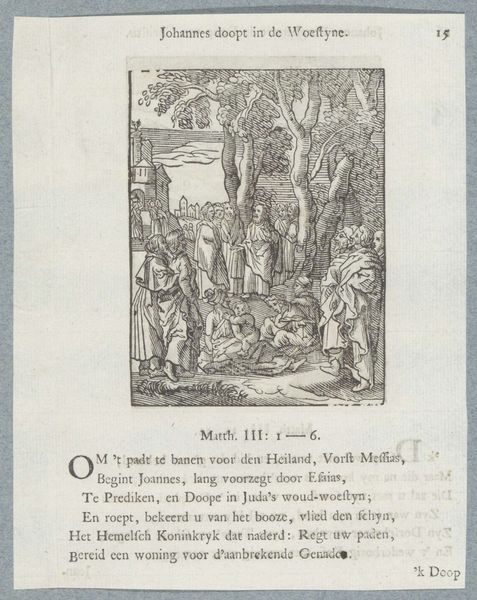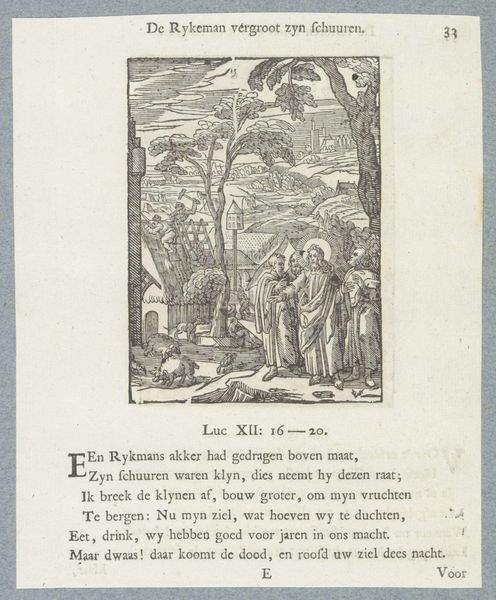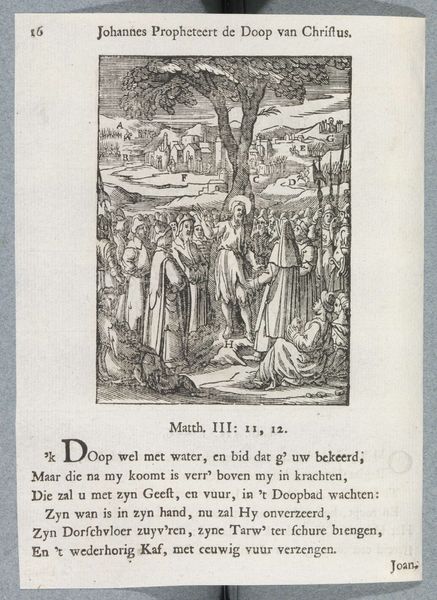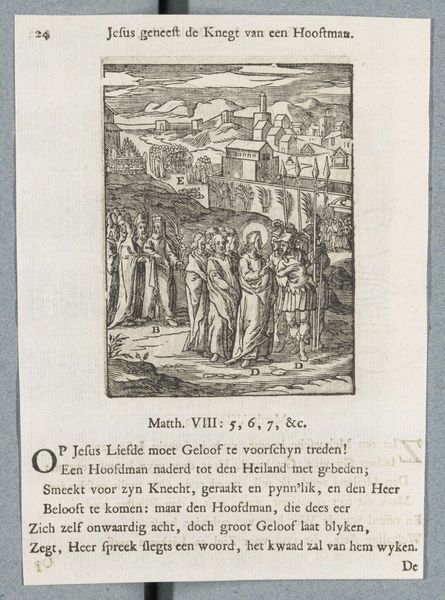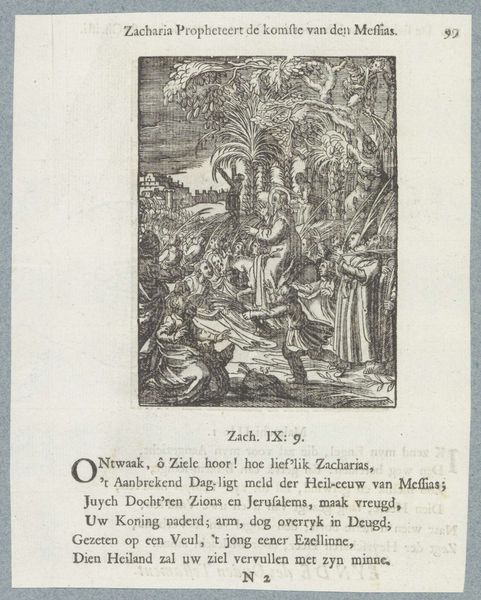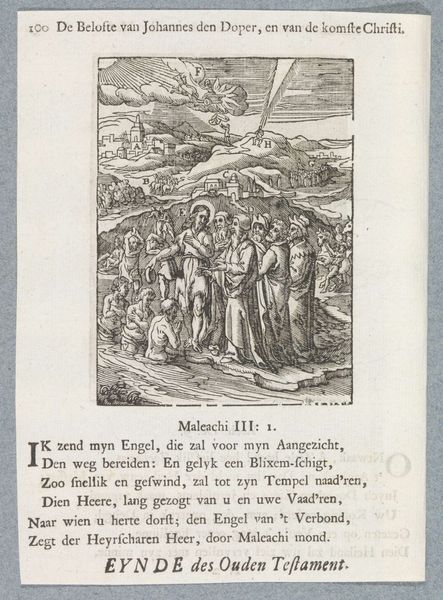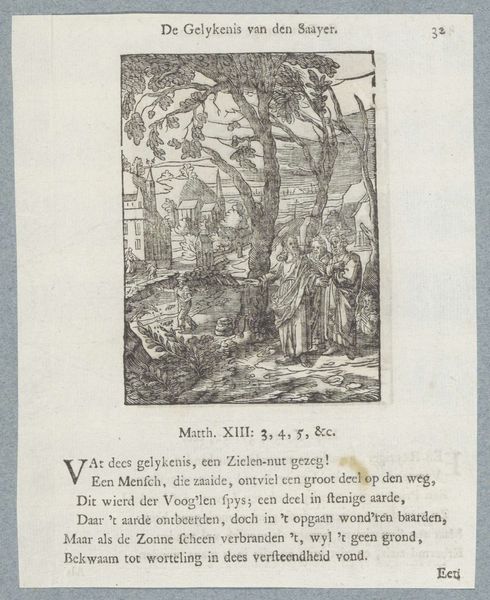
print, engraving
#
portrait
#
baroque
# print
#
figuration
#
line
#
history-painting
#
engraving
Dimensions: height 100 mm, width 73 mm, height 168 mm, width 132 mm
Copyright: Rijks Museum: Open Domain
Curator: This print, dating somewhere between 1629 and 1740, depicts Christ healing a leper. The work is attributed to Christoffel van Sichem the Younger, and is part of the Rijksmuseum's collection. What are your first impressions? Editor: Stark. Starkly rendered, I mean. There's an immediate tension between the darkness of the engraved lines and the implied divinity of the scene. Almost unsettling, wouldn’t you say? Curator: Indeed. Sichem employed a dense network of lines to create depth and texture, a typical technique in engravings, but there is something rough-hewn and unpolished about the finished image. It certainly highlights the contrast between the healthy and the afflicted. You almost feel like you can *feel* the leper's despair. Editor: Absolutely. Look how Sichem directs the viewer's eye—from the leper kneeling, up to Christ, and then that incredible throng of onlookers cascading back into the hilly background. It's not just about documentation. It's almost theatrical in its composition. And the architecture—almost dreamlike in its vagueness, so it does not pull our eye away from the main scene. Curator: The piece is powerful. As the artist, if I can speak for van Sichem, my approach always begins with the human experience, the deeply felt emotions inherent to faith. One has to find their connection. Find themselves within it. This isn’t just an image; it’s meant to evoke reflection on healing, on grace. A touch of hope and despair! Editor: It's interesting that you mention the emotional element. When approaching from a formalist viewpoint, one can also view the artwork through a different lens. Note the engraving's successful attempt to render volume in its robes, and notice also the linear treatment in the hillside to add both depth and to move us to a second event or moment in time in the distance. These touches—a visual echo, or almost like reading multiple verses or acts together—enhance that human emotional appeal! Curator: Yes, and hopefully viewers find in it something uniquely their own.
Comments
No comments
Be the first to comment and join the conversation on the ultimate creative platform.
